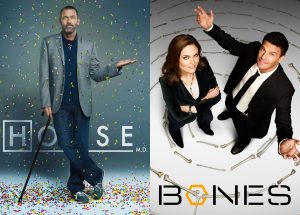A recent article on FoxNews.com reports a skull found that is a mix of ‘modern’ human and Neanderthal species. The skull exhibits traits of both, though it is categorized as a ‘modern’ human. It is speculated–because no proof exists–that Neanderthals and ‘modern’ humans interbred to create this third version of human. However, the most interesting part of this article is a quote from the leading researcher.
“Such differences raise important questions about the evolutionary history of modern humans,” [João] Zilhão said. “They could be the result of evolutionary reversal or reflect incomplete paleontological sampling of Middle Paleolithic human diversity. They could also reflect admixture with Neanderthal populations as modern humans spread through western Eurasia. This mixture would have resulted in both archaic traits retained from the Neanderthals and unique combinations of traits resulting from the blending of previously divergent gene pools.” (emphasis added).
Some things worth noting in this quote are (1) the speculative words “could” and “would” are used three times and (2) three different causes are postulated. What makes this interesting is it shows that they have no real, factual, provable, or testable hypotheses to explain this skull. Instead, they offer speculation and conjecture based on a macro-evolutionary presupposition and evidence that seems to support, albeit very poorly, their evolutionary beliefs.
What’s interesting about evolution is that it does not fit its own designation. The so-called evolutionary theory is not a theory at all, but is, instead, a hypothesis. To understand this, one must understand the scientific method. This method is “an empirical, inductive approach to knowledge.” Empirical means that it is based primarily on observation and experience. This is the aspect in which measurability falls. Only empirical evidence is measurable. Inductive means that it depends on probability and not certainty. Scientists are willing to accept a measure of failure.1 If something is true 99 times out of 100, they say it is true all the time, although it is actually true 99 percent of the time. The scientific method seeks to obtain the greatest possible result in order to determine truth. Putting this simply, the scientific method uses measurable, sensory experience to determine the most probable answer in order to understand truth.
Within the method concept follows a certain hierarchy: hypothesis, theory, law. A hypothesis is the first stage and is an “unproved theory, proposition, or supposition.” A theory, the second stage, is “a hypothesis that has passed every objective test, thus yielding greater certainty that it is true.” A law, the final stage, is “a theory that passes every conceivable test, thus yielding the highest level of certainty that can be achieved.”2
Before something can be considered scientific, it must submit itself to the scientific method. The key to the scientific method, however, is testing. Despite its claims as a scientific theory, evolution is neither testable nor has it “passed every objective test.” Instead, as this news article proves, more and more holes arise that draws attention to the fact that something is wrong with the supposed ‘evolutionary theory.’ In other words, this theory fails test after test as new discoveries are made. Therefore, evolution remains a hypothesis and has not yet reached the level of a scientific theory.
Now that a basic understanding of the scientific method exists, it is worth mentioning the presupposition of those investigating the man’s origins. Many scientists investigating man’s origins accept evolution as a scientific fact, often elevating it to a law, although it never has reached that plateau following the scientific method outlined above. Nevertheless, any evidence is seen through the lens of evolution, which colors their investigation and causes them to be biased and unobjective. The result is a tainted investigation rather than an objective one. However, because all are human, we all can easily fall victim of this problem: approaching evidence with a presupposed bias.
However, some people have abandoned their belief in evolution in support of arguing against it, including Carl Baugh, curator of the Creation Museum in Glen Rose, Texas. Further, other scientists have investigated both the science of evolution and the evidence in order to reach the truth. Although we all have presuppositions, it is possible to remain fairly neutral and not seek to perceive all data regarding man’s origins through a biased lens, but to examine the evidence and ask what it wants to reveal. Put more simply, scientists and readers should not seek to prove or disprove a hypothesis or theory, but should simply examine the evidence and let the evidence tell the story.
I believe the evidence continues to negate the traditional evolutionary hypothesis of macro-evolution (evolution between species).3 However, I do believe in micro-evolution (evolution within the same species). Micro-evolution is often called adaptation. Because of the evidences that poke many holes in macro-evolution, I believe that this origin must be rejected. The only other concept proposed is creationism. I believe in creation, not because of scientific evidence, but because of my faith in God. While this does, admittedly result in a presupposition on my part, the evidence, when analyzed, will support the creation account recorded in the Scriptures.
Further resources for study:
Darwin Strikes Back: Defending the Science of Intelligent Design
By Thomas Woodward / Baker
The Design Inference: Eliminating Chance Through Small Probabilities
By William A. Dembski / Cambridge University Press
The Design Revolution: Answering the Toughest Questions About Intelligent Design
By William Dembski / InterVarsity Press
Doubts about Darwin: A History of Intelligent Design
By Thomas Woodward / Baker
Intelligent Design: The Bridge Between Science & Theology
By William Dembski / InterVarsity Press
Mere Creation: Science, Faith and Intelligent Design
By William Dembski, ed. / InterVarsity Press
Reclaiming Science from Darwinism: A Clear Understanding of Creation, Evolution, and Intelligent Design
By Kenneth Poppe / Harvest House Publishers
The Privileged Planet, DVD
By Randolf Productions Inc
1Craig V. Mitchell, Charts of Christian Ethics (Grand Rapids: Zondervan, 2006), 17.
2Ibid., 17.
3Macro-evolution is commonly called the evolutionary theory, the theory of evolution, and Darwinian evolution (named after Charles Darwin).














